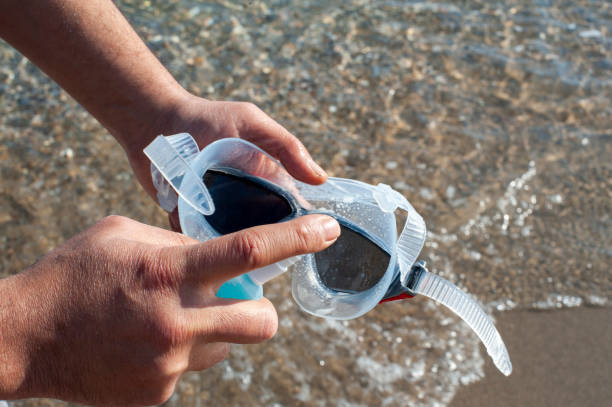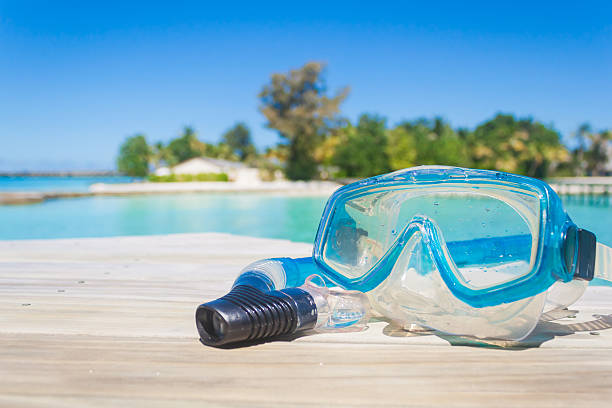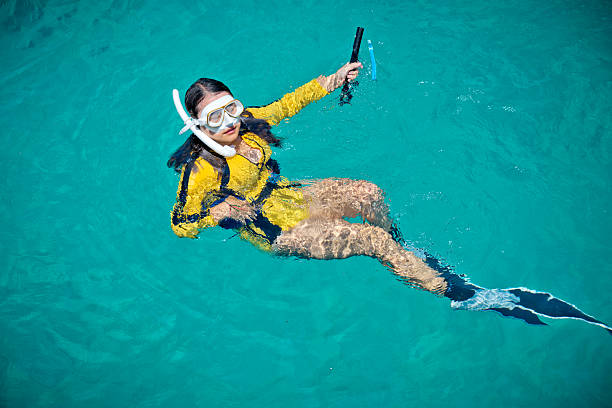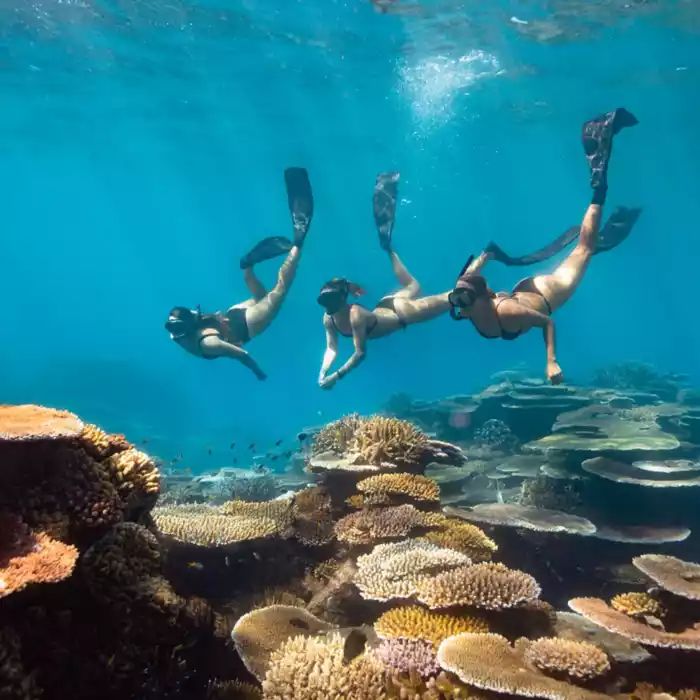
fonte: pinterest
O mergulho livre é um esporte cativante e emocionante que permite explorar as profundezas hipnotizantes do mundo subaquático. Ele combina a arte de prender a respiração com a atenção plena, permitindo que você se conecte com o oceano de uma forma revigorante e libertadora. Neste artigo, vamos nos aprofundar nas complexidades do mergulho livre, discutindo seus fundamentos, benefícios e muito mais. Então, vamos explorar tudo o que você precisa saber sobre o mergulho livre.
O que é mergulho livre?
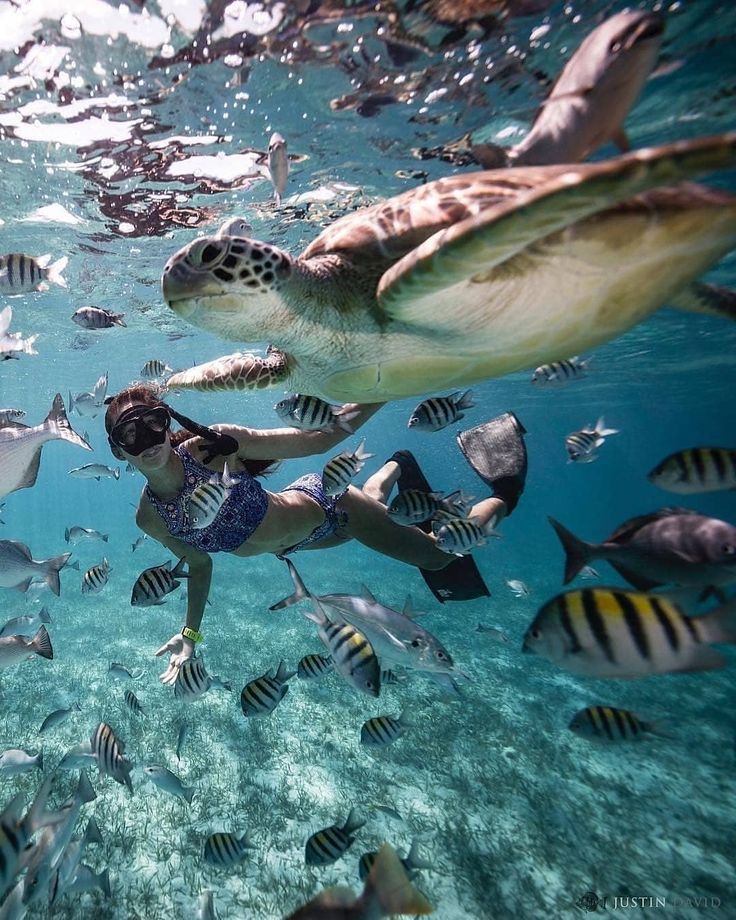
fonte: pinterest
O mergulho livre é uma atividade extraordinária que permite explorar o mundo subaquático sem nenhum equipamento de mergulho pesado. Envolve a arte de prender a respiração enquanto se aventura nas profundezas, confiando apenas em suas próprias capacidades físicas e mentaisAo contrário do mergulho autônomo, que utiliza aparelhos de respiração para fornecer ar debaixo d'água, o mergulho livre abraça o desafio de prender a respiração e enfatiza a conexão entre o mergulhador e o ambiente. Essa forma de exploração subaquática permite que os indivíduos experimentem uma sensação única de tranquilidade e união com o oceano.
Benefícios do mergulho livre
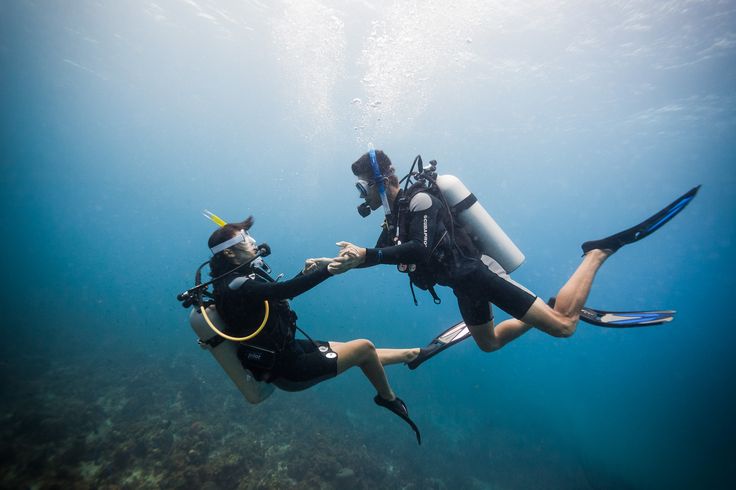
fonte: pinterest
Melhorando a capacidade pulmonar e o controle da respiração
A prática do mergulho livre oferece uma infinidade de benefícios, tanto físicos quanto mentais. Uma das melhorias mais notáveis é o aumento da capacidade pulmonar e do controle da respiração. Com a prática regular, os mergulhadores livres desenvolvem a capacidade de inspirar grandes volumes de ar e prender a respiração por períodos prolongados. Isso não só aumenta a capacidade pulmonar geral, como também melhora a eficiência e o controle respiratório.
Melhorando a aptidão cardiovascular e a resistência
Além disso, o mergulho livre é um excelente exercício cardiovascular que aumenta os níveis de condicionamento físico e a resistência. O esforço necessário para mergulhar e nadar debaixo d'água fortalece o coração e melhora a circulação sanguínea. Isso, por sua vez, ajuda a desenvolver a resistência e a saúde cardiovascular em geral.
Promovendo força mental e relaxamento
Outro benefício significativo do mergulho livre reside na sua capacidade de promover a força mental e o relaxamento. O esporte exige um profundo nível de concentração e foco, forçando os mergulhadores a se livrarem de quaisquer distrações e a se concentrarem plenamente no momento. Essa atenção plena, combinada com as técnicas de respiração rítmica utilizadas no mergulho livre, promove um estado de calma, reduz o estresse e auxilia na obtenção de clareza mental.
Mergulho livre vs. mergulho autônomo
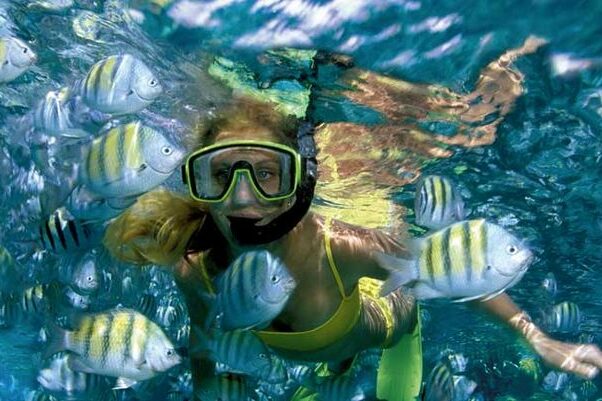
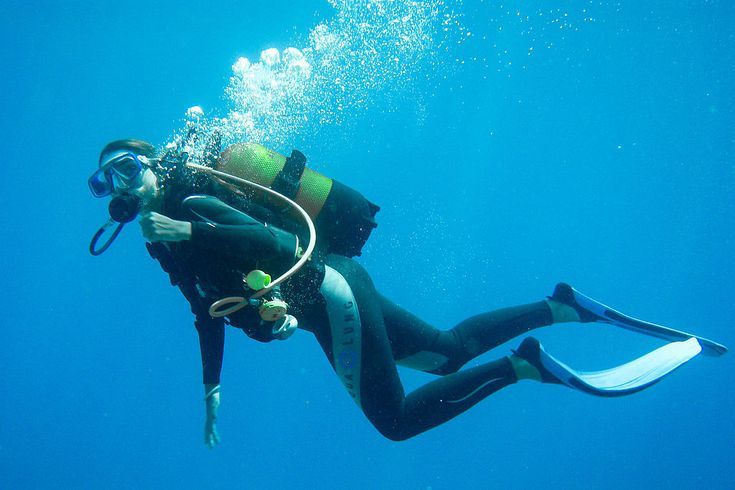
fonte: pinterest
Embora tanto o mergulho livre quanto o mergulho autônomo permitam que as pessoas explorem o mundo subaquático, eles diferem significativamente em termos de equipamento, técnica e experiência geral.
| Mergulho livre | Mergulho | |
| Técnica | Baseia-se em técnicas de retenção da respiração e natação. | Depende de equipamento especializado, incluindo um tanque de mergulho e um regulador. |
| Tempo de fundo | Tempo de fundo limitado devido à retenção da respiração. | Tempo de fundo prolongado, pois o suprimento de ar é fornecido pelo tanque de mergulho. |
| Experiência | Enfatiza a atenção plena e a conexão com o oceano. | Oferece uma experiência mais envolvente para explorar os arredores. |
| Equipamento | Requer menos equipamentos e acessórios. | Requer treinamento extensivo sobre uso e manutenção do equipamento. |
| Capacidade de profundidade | Adequado para profundidades rasas a moderadas. | Permite mergulhos mais profundos com certificação e treinamento adequados. |
Ar fornecido pela superfície vs. independência subaquática
Uma das principais diferenças entre mergulho livre e mergulho autônomo reside no método de suprimento de ar. No mergulho autônomo, os mergulhadores dependem do ar fornecido pela superfície, fornecido por um aparelho de respiração. Este equipamento permite longos períodos debaixo d'água, fornecendo suprimento contínuo de ar ao mergulhador. Em contraste, o mergulho livre enfatiza a arte de prender a respiração, permitindo que os mergulhadores explorem as profundezas sem qualquer fonte externa de ar. Isso proporciona uma sensação única de autossuficiência e liberdade, já que os mergulhadores livres dependem exclusivamente de suas próprias capacidades físicas.
A sensação de ausência de peso no mergulho livre
Outro aspecto que diferencia o mergulho livre do mergulho autônomo é a sensação de ausência de peso. No mergulho livre, os mergulhadores não precisam de equipamentos pesados de mergulho, o que lhes permite deslizar pela água com facilidade e sem esforço. Essa ausência de peso cria uma sensação de liberdade absoluta, permitindo que os mergulhadores vivenciem o mundo subaquático em sua forma mais pura.
A emoção e o desafio de prender a respiração
Um dos aspectos mais emocionantes do mergulho livre é o desafio de prender a respiração. Ao contrário dos mergulhadores autônomos, que têm um suprimento contínuo de ar, os mergulhadores livres precisam confiar em sua capacidade pulmonar e controle para permanecer debaixo d'água. A capacidade de prender a respiração por longos períodos torna-se uma conquista pessoal, expandindo os limites do que é física e mentalmente possível. Essa emoção e a sensação de realização a ela associada tornam o mergulho livre uma experiência verdadeiramente única e gratificante.
O que você precisa para mergulho livre?
Para praticar mergulho livre, são necessárias certas atividades essenciais e opcionais equipamento de mergulho livre é obrigatório, garantindo segurança e desempenho ideal. O equipamento básico necessário para o mergulho livre inclui máscara, snorkel e nadadeiras.
Máscara de mergulho livre
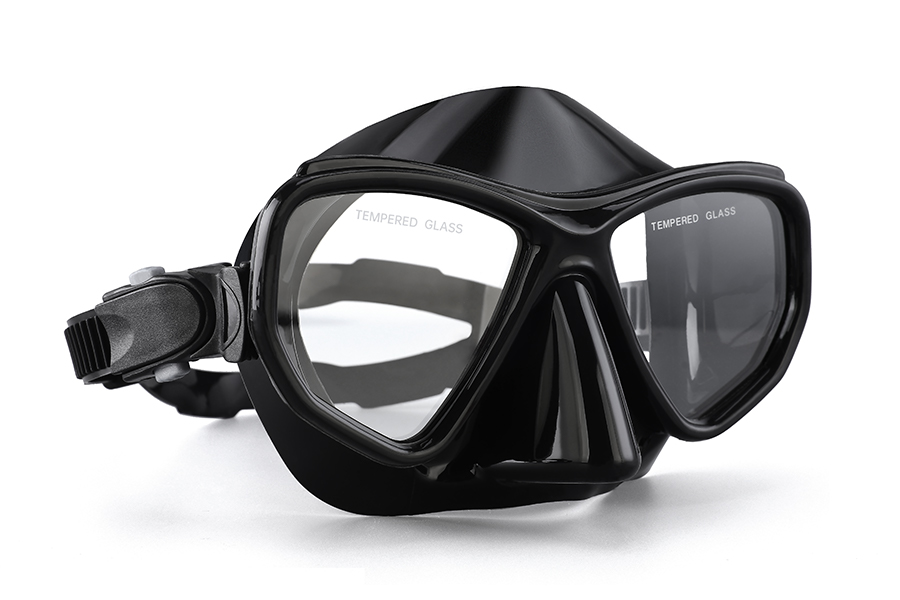
O máscara de mergulho livre Serve para proporcionar um campo de visão claro debaixo d'água, permitindo que os mergulhadores observem a fascinante vida marinha e as paisagens subaquáticas. Uma boa máscara de mergulho livre deve se ajustar perfeitamente, impedindo a entrada de água e oferecendo excelente visão periférica.
Mergulho livre com snorkel
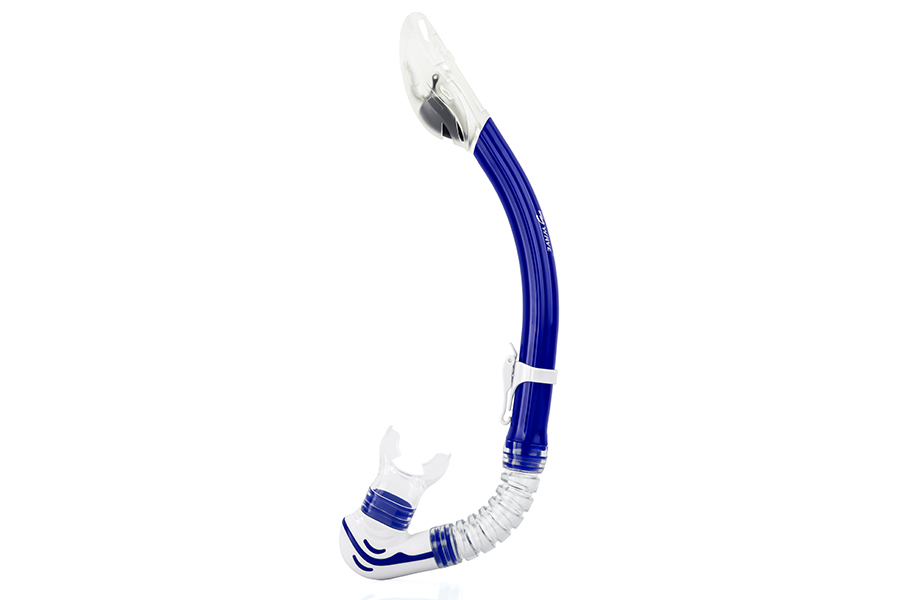
O mergulho livre com snorkel é uma ferramenta essencial que permite aos mergulhadores respirar enquanto flutuam de bruços na superfície da água. Permite uma respiração eficiente e conserva energia, já que os mergulhadores não precisam voltar à superfície constantemente para respirar. O snorkel deve ser de alta qualidade, com um bocal confortável e uma válvula de purga eficiente para expelir qualquer água que possa entrar.
Nadadeiras para mergulho livre
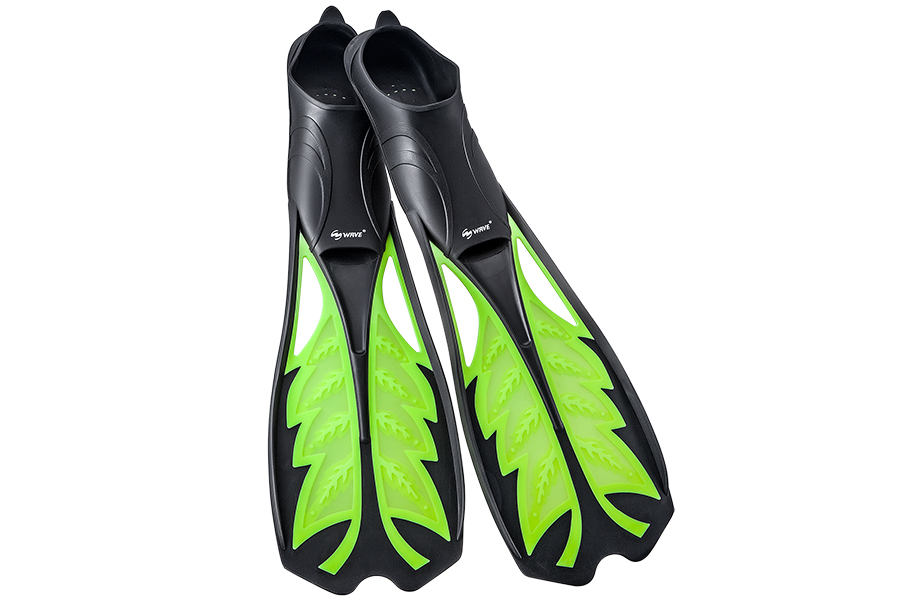
Nadadeiras de mergulho livre São vitais para a propulsão na água, permitindo que os mergulhadores se movam com mais eficiência e conservem energia. Disponíveis em diversos modelos, a escolha depende da preferência pessoal e do estilo de mergulho. As nadadeiras devem se ajustar perfeitamente e ser confortáveis para uso por longos períodos.
Equipamento opcional para mergulho livre: roupas de mergulho, pesos e computadores de mergulho
Além do equipamento essencial, há equipamentos opcionais e de segurança que podem melhorar a experiência de mergulho livre.
- Fatos de mergulho fornecem proteção térmica e isolamento, permitindo que os mergulhadores permaneçam confortáveis em temperaturas de água mais frias.
- Pesos são usados para atingir flutuabilidade neutra, ajudando os mergulhadores a descer e permanecer na profundidade desejada sem esforço.
- Computadores de mergulho são ferramentas valiosas que fornecem dados em tempo real, como profundidade, tempo de mergulho e taxa de subida, garantindo a segurança e o gerenciamento dos perfis de mergulho.
Equipamento de segurança: Boia e faca de mergulho
Por questões de segurança, é crucial ter uma bóia presa a uma linha durante o mergulho livre. Isso bóia atua como um marcador visual e pode ser usado para descansar ou sinalizar perigo. Também fornece visibilidade para outras embarcações, garantindo a segurança do mergulhador. Além disso, uma faca de mergulho é essencial, servindo para cortar emaranhados ou linhas de pesca descartadas.
Como praticar mergulho livre com segurança
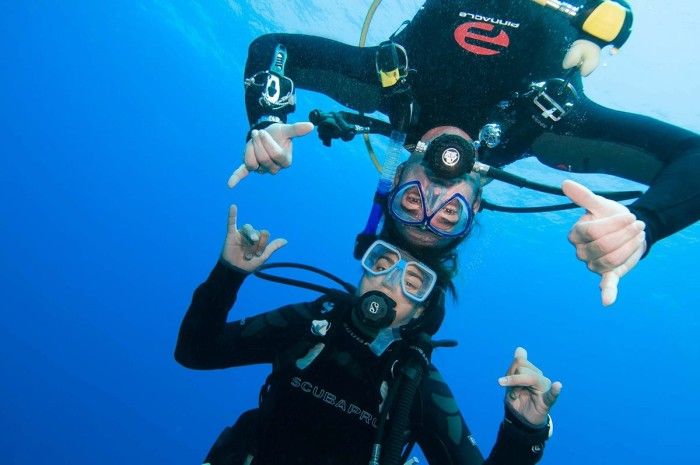
fonte: pinterest
Para praticar mergulho livre com segurança, há vários fatores importantes a considerar.
Compreendendo seus limites e habilidades
O mais importante é entender seus limites e habilidades. Cada indivíduo tem capacidades fisiológicas e psicológicas diferentes, e é crucial respeitar esses limites e não ir além do que é confortável. Saiba quando interromper um mergulho se estiver se sentindo mal ou cansado.
Técnicas de respiração adequadas e exercícios de relaxamento
Técnicas adequadas de respiração e exercícios de relaxamento são fundamentais no mergulho livre. A respiração diafragmática, ou respiração abdominal, permite uma troca gasosa mais eficiente e promove o relaxamento. Respirar lenta e controladamente antes de um mergulho pode ajudar a acalmar a mente e preparar o corpo para a experiência subaquática.
Sistema Buddy e Comunicação Subaquática
O sistema de dupla é uma medida de segurança essencial no mergulho livre. Mergulhe sempre com um parceiro treinado em mergulho livre que possa oferecer suporte e assistência em caso de emergência. Estabeleça uma comunicação eficaz por meio do planejamento pré-mergulho e do uso de sinais de mão. Verifiquem regularmente o bem-estar um do outro durante o mergulho para garantir a segurança e evitar acidentes.
Procedimentos de emergência e primeiros socorros em mergulho livre
É crucial estar preparado para emergências ao praticar mergulho livre. O conhecimento de técnicas de primeiros socorros específicas para mergulho livre, como respirações de resgate e posições de recuperação, pode salvar vidas em situações críticas. Compreender e praticar procedimentos de emergência, como emergir lentamente e equalizar os ouvidos uniformemente, é vital para prevenir barotrauma e outras condições potencialmente perigosas.
Como fazer mergulho livre para iniciantes
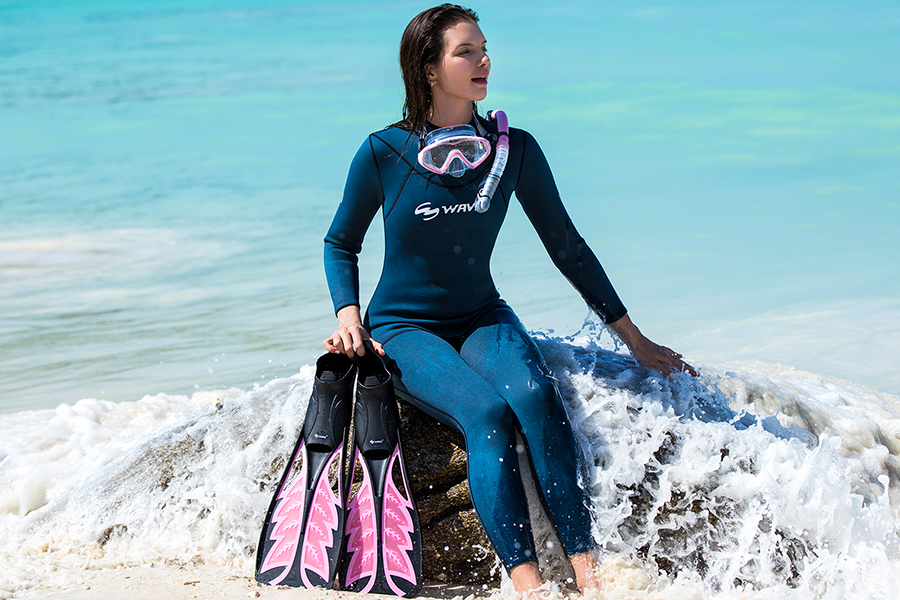
Há vários fatores importantes a serem considerados sobre como começar o mergulho livre para iniciantes.
Procurando um instrutor ou curso de mergulho livre de boa reputação
Para iniciantes no mergulho livre, encontrar um instrutor ou curso de mergulho livre com boa reputação é fundamental. Treinamento e orientação adequados de um instrutor qualificado garantirão que você desenvolva as habilidades e o conhecimento necessários para praticar este esporte com segurança. Procure instrutores certificados por organizações reconhecidas como AIDA, PADI ou SSI. Um bom instrutor apresentará os princípios básicos do mergulho livre, incluindo protocolos de segurança, técnicas de equalização e exercícios respiratórios. Ele também fornecerá feedback e suporte personalizados, ajudando você a progredir em um ritmo confortável e a desenvolver confiança em suas habilidades.
Dominando as habilidades básicas: chutes e equalização adequados
Para se tornar um mergulhador livre proficiente, dominar as habilidades básicas é crucial. Técnicas adequadas de pernada, como a pernada flutuante ou a pernada de golfinho, permitirão que você se mova com eficiência na água, conservando energia e maximizando o tempo de apneia. A pernada flutuante envolve movimentos alternados das pernas, enquanto a pernada de golfinho utiliza um movimento fluido e ondulatório. A equalização, o processo de equalizar a pressão no ouvido médio, é essencial para prevenir barotrauma e desconforto. Técnicas como a manobra de Valsalva ou a manobra de Frenzel podem ajudar. Progredir gradualmente em profundidade e tempo submerso permitirá que você ganhe confiança e fortaleça suas habilidades de mergulho livre.
Superando Bloqueios Mentais
Superar bloqueios mentais é um aspecto crucial do mergulho livre. O medo de prender a respiração ou de ficar submerso pode limitar significativamente o seu progresso. Praticando técnicas de relaxamento, como relaxamento muscular progressivo e respiração profunda, você pode acalmar a mente e o corpo. Exercícios de visualização, nos quais você imagina mergulhos bem-sucedidos e serenos, ajudam a criar uma imagem mental positiva. Além disso, o diálogo interno positivo reforça a confiança e dissipa pensamentos negativos. Ao aplicar essas estratégias consistentemente, você pode superar barreiras mentais, desenvolver confiança em suas habilidades e abraçar plenamente a experiência transformadora do mergulho livre.
Técnicas e treinamento de retenção da respiração
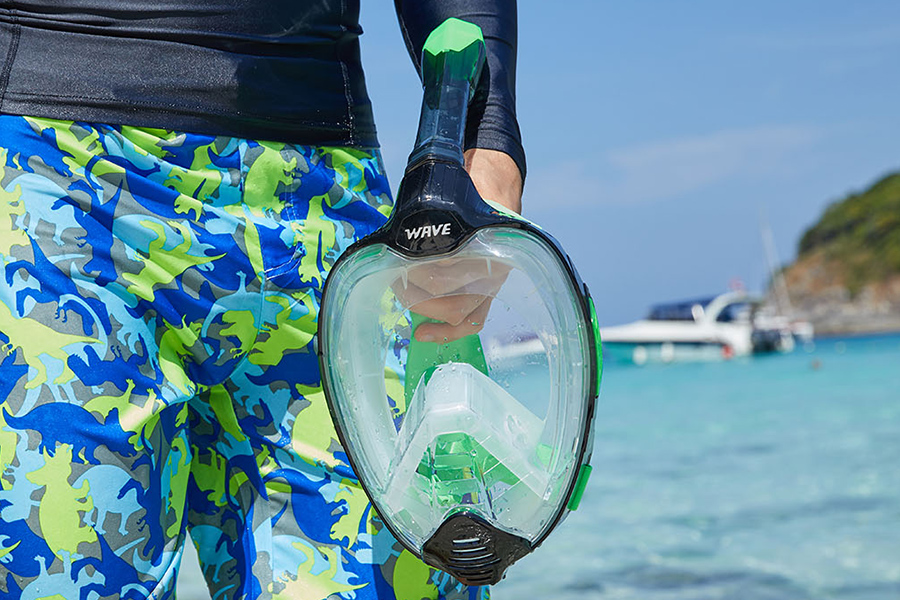
Desenvolvimento da capacidade pulmonar e respiração diafragmática
Desenvolver a capacidade pulmonar e dominar a respiração diafragmática são essenciais no mergulho livre. Treinar regularmente pode aumentar a quantidade de ar que você consegue inspirar e armazenar, prolongando assim o tempo de apneia. Comece com exercícios de respiração diafragmática, que envolvem respirar profundamente para a parte inferior dos pulmões, expandindo o diafragma em vez do tórax. Incorpore exercícios como a respiração a vácuo, que envolve expirar completamente e puxar o diafragma para cima, e o compressas pulmonares, onde você inspira várias vezes para expandir os pulmões além de sua capacidade normal. Essas técnicas podem aumentar significativamente a capacidade pulmonar e otimizar a função respiratória, melhorando seu desempenho geral no mergulho livre.
Exercícios de Apneia Estática
Os exercícios de apneia estática concentram-se em aumentar o tempo de apneia. Esses exercícios envolvem prender a respiração enquanto você está parado, aumentando gradualmente a duração ao longo do tempo. Comece encontrando um ambiente confortável e seguro, como uma piscina com um colega ou instrutor treinado. Comece com a respiração diafragmática para maximizar a ingestão de oxigênio e, em seguida, prenda a respiração mantendo-se o mais relaxado possível. Implementar técnicas de relaxamento, como visualização e relaxamento muscular controlado, pode reduzir a ansiedade e melhorar o desempenho geral da apneia, permitindo sessões de apneia estática mais longas e eficazes.
Exercícios de apneia dinâmica
Exercícios dinâmicos de apneia enfatizam o desenvolvimento de resistência e eficiência no mergulho livre. Esses exercícios envolvem nadar horizontal ou verticalmente enquanto prende a respiração, aumentando sua capacidade de nadar distâncias maiores e conservar energia.
A utilização de técnicas adequadas, juntamente com treinamento e prática regulares, melhorará sua capacidade de prender a respiração e permitirá que você explore o mundo subaquático por longos períodos.
Erros comuns no mergulho livre e como evitá-los
Existem vários erros comuns que as pessoas costumam cometer ao praticar mergulho livre. Estar ciente desses erros e saber como evitá-los é essencial para uma experiência de mergulho segura e agradável.
Pular exercícios de aquecimento e alongamento pode levar a distensões musculares, cãibras e redução geral do desempenho na água. Aquecimentos e alongamentos adequados ajudam a preparar o corpo para o esforço do mergulho livre e diminuem o risco de lesões.
Ignorar sinais de problemas respiratórios, como tosse ou chiado no peito, podem ser perigosos. Esses sintomas podem indicar inflamação nos pulmões ou nas vias aéreas, o que pode levar a potenciais complicações na água. Se você tiver algum problema respiratório, é essencial procurar orientação médica e abster-se de praticar mergulho livre até que seja liberado por um profissional de saúde.
Descendo muito rápido durante um mergulho pode resultar em barotrauma, uma condição causada pela pressão desigual entre o ouvido médio e o ambiente circundante. Ignorar as técnicas adequadas de equalização pode levar a lesões no ouvido e afetar sua experiência geral de mergulho. Não tenha pressa e equalize com frequência durante a descida, garantindo um mergulho seguro e confortável.
Falta de medidas de segurança adequadas e comunicação com seu amigo pode ser extremamente perigoso no mergulho livre. Não ter um parceiro de mergulho, negligenciar o planejamento pré-mergulho ou não estabelecer sinais de mão claros pode resultar em acidentes ou perda de comunicação debaixo d'água. Sempre priorize a segurança do mergulhador e siga os protocolos de segurança estabelecidos.
Melhores destinos de mergulho livre ao redor do mundo
Para aqueles que procuram destinos de mergulho livre inspiradoresO mundo oferece uma abundância de locais subaquáticos de tirar o fôlego. Esses destinos oferecem uma oportunidade de mergulhar na beleza e na diversidade da vida marinha.
O Grande Buraco Azul em Belize
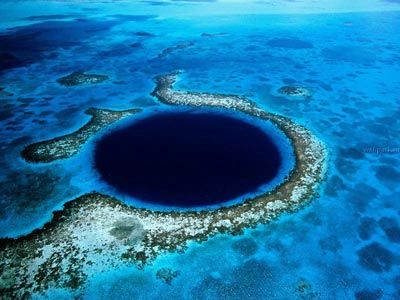
fonte: pinterest
O Grande Buraco Azul em Belize é um destino famoso e icônico para mergulho livre. Este enorme sumidouro subaquático ostenta águas azuis cristalinas, atraindo mergulhadores ávidos por explorar suas profundezas místicas. O Grande Buraco Azul está repleto de vibrantes formações de corais e diversas espécies marinhas, oferecendo uma atmosfera sobrenatural. Ao descer em sua imensidão azul profunda, você encontrará estalactites e estalagmites fascinantes, tornando-se uma experiência inesquecível de mergulho livre que combina beleza natural com um senso de aventura.
Águas cristalinas das Maldivas
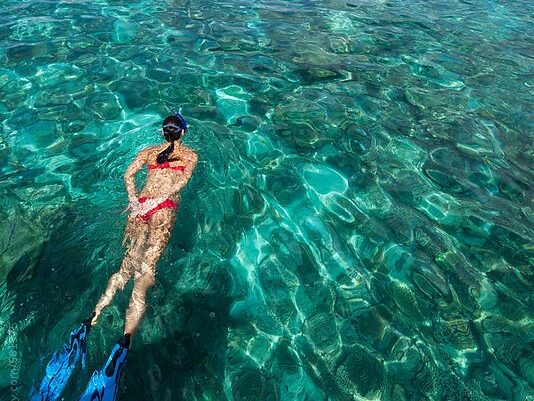
fonte: pinterest
As Maldivas são famosas por suas águas cristalinas e azul-turquesa e pela abundante vida marinha, tornando-as um destino ideal para mergulhadores livres. Mergulhe na imensa beleza de seus vibrantes recifes de corais, onde você pode encontrar as esquivas arraias-manta planando graciosamente e nadar ao lado de dóceis tubarões-baleia. A visibilidade subaquática é incomparável, permitindo uma experiência imersiva em um verdadeiro paraíso marinho. As Maldivas oferecem uma viagem inesquecível às profundezas para os entusiastas do mergulho, prometendo aventuras e encontros de tirar o fôlego.
Península de Yucatán, no México
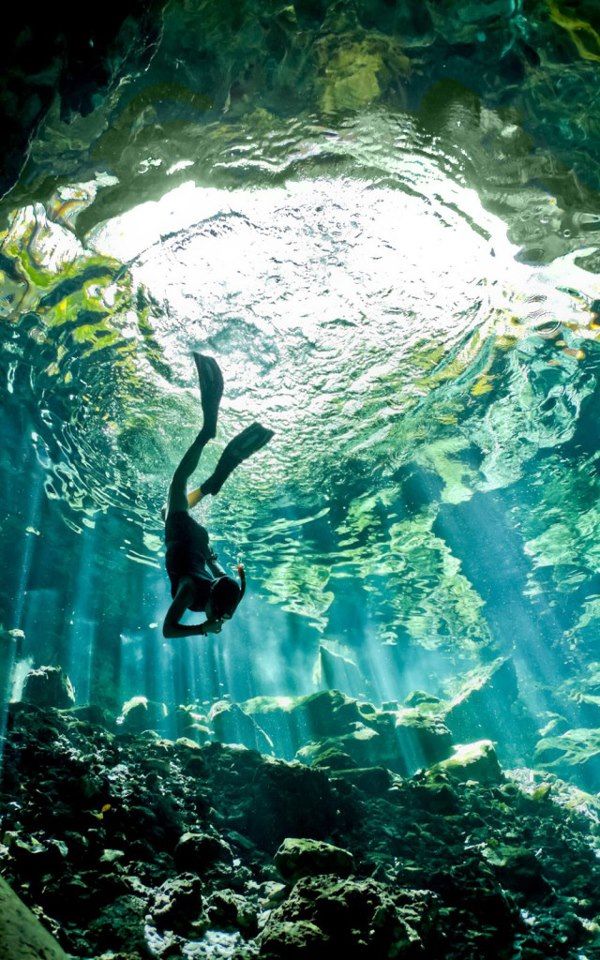
fonte: pinterest
A Península de Yucatán, no México, abriga alguns dos sistemas de cavernas subaquáticas mais extraordinários do mundo, conhecidos como cenotes. Essas dolinas naturais, formadas a partir de leitos rochosos de calcário desmoronados, criam um ambiente misterioso e cativante para os mergulhadores livres explorarem. Com formações rochosas inspiradoras, águas azuis cristalinas e raios de sol penetrando nas profundezas, os cenotes oferecem uma experiência única e inesquecível de mergulho livre. Seja navegando por passagens estreitas ou maravilhando-se com as estalactites e estalagmites submersas, os cenotes proporcionam uma aventura sobrenatural.
Os recifes de coral da Indonésia
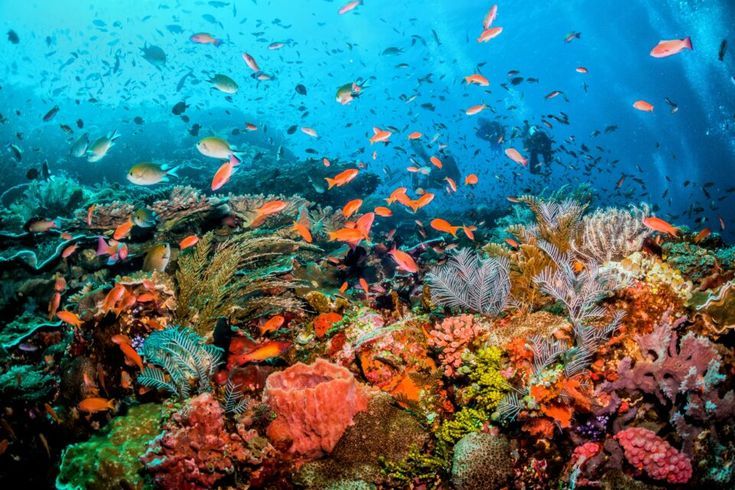
fonte: pinterest
Os ricos recifes de corais da Indonésia são uma visita obrigatória para os entusiastas do mergulho livre. Locais icônicos como Raja Ampat e Bali apresentam alguns dos ecossistemas marinhos mais diversos e vibrantes do mundo. Mergulhe em uma colorida tapeçaria de jardins de corais, encontre majestosas arraias-manta e testemunhe a incrível biodiversidade que prospera sob a superfície. As águas mornas e as deslumbrantes paisagens subaquáticas da Indonésia fazem dela um destino de eleição tanto para mergulhadores iniciantes quanto experientes.
Conclusão
O mergulho livre proporciona uma experiência transformadora e inspiradora, permitindo que as pessoas se conectem com o oceano de forma profunda. Seja você iniciante ou experiente, explorar os melhores destinos de mergulho livre do mundo certamente o deixará cativado pelas maravilhas do mundo subaquático. Então, respire fundo, mergulhe nas profundezas e deixe o mundo hipnotizante abaixo da superfície se revelar diante dos seus olhos.
Perguntas frequentes
P1: Quais são as diferentes disciplinas do mergulho livre?
O mergulho livre inclui diversas disciplinas, cada uma com foco em diferentes aspectos do mergulho em apneia. Algumas disciplinas comuns são:
- Peso constante (CWT): Mergulho com nadadeiras e/ou monobarbatana, onde o mergulhador desce e sobe com o mesmo peso.
- Imersão Livre (FIM): Puxar uma corda para descer e subir sem usar nadadeiras.
- Apneia Estática (AET): Prender a respiração pelo máximo de tempo possível enquanto flutua na superfície.
- Apneia Dinâmica (DYN): Nadar horizontalmente debaixo d'água com nadadeiras ou uma mononadadeira para cobrir a distância máxima em uma única respiração.
P2: Como começo a aprender mergulho livre?
Para começar a aprender mergulho livre, é essencial fazer um curso com um instrutor certificado ou uma escola de mergulho livre reconhecida. Iniciantes aprenderão protocolos de segurança, técnicas de respiração, métodos de equalização e habilidades subaquáticas básicas. Recomenda-se praticar em um ambiente controlado, como uma piscina, antes de passar para águas abertas. Além disso, manter um bom condicionamento físico, praticar relaxamento e melhorar a capacidade pulmonar podem ajudar a aprimorar sua experiência de mergulho livre.
Q3: O mergulho livre é seguro?
O mergulho livre pode ser seguro quando praticado corretamente e com treinamento adequado. As medidas de segurança incluem nunca mergulhar sozinho, entender seus limites e ter um parceiro ou observador treinado. É crucial aprender e seguir os protocolos de segurança, como reconhecer sinais de hipóxia (baixo nível de oxigênio) e como realizar procedimentos de resgate. Evitar a hiperventilação antes dos mergulhos e subir lentamente também são importantes para evitar apagões em águas rasas e outros riscos.
Q4: Quais equipamentos eu preciso para mergulho livre?
O equipamento básico de mergulho livre inclui uma máscara de baixo volume, nadadeiras longas e uma roupa de mergulho para proteção contra o frio e flutuabilidade. Um snorkel é frequentemente usado para respirar na superfície antes e depois dos mergulhos. Um cinto de lastro ajuda a manter a flutuabilidade neutra em profundidade, e um relógio de mergulho ou computador pode monitorar os tempos e as profundidades dos mergulhos. Além disso, equipamentos de segurança, como uma bóia ou boia, são usados para marcar o local do mergulho e fornecer suporte na superfície.
P5: Como posso melhorar meu tempo de apneia?
Melhorar o tempo de apneia envolve a prática de técnicas respiratórias específicas, como respiração diafragmática e de relaxamento. Treinos regulares de apneia estática (prender a respiração enquanto se está parado) e apneia dinâmica (prender a respiração enquanto se nada horizontalmente) podem ajudar. A aptidão cardiovascular, a flexibilidade e uma alimentação adequada também contribuem para o aumento da capacidade de apneia. É importante aumentar a duração da apneia gradualmente e em condições seguras.
P6: Quais são os benefícios do mergulho livre para a saúde?
O mergulho livre oferece inúmeros benefícios à saúde, incluindo melhora da capacidade pulmonar e da eficiência respiratória. Melhora o condicionamento cardiovascular, reduz o estresse por meio de técnicas de relaxamento e aumenta o foco mental e a disciplina. O esporte também promove maior consciência corporal e flexibilidade. Além disso, estar na água e em contato com a natureza pode proporcionar uma sensação de paz e bem-estar. No entanto, é importante praticar com segurança para evitar quaisquer riscos potenciais.
